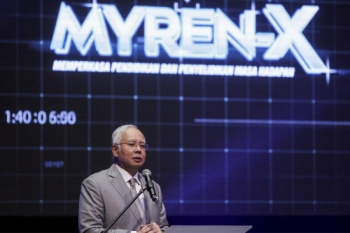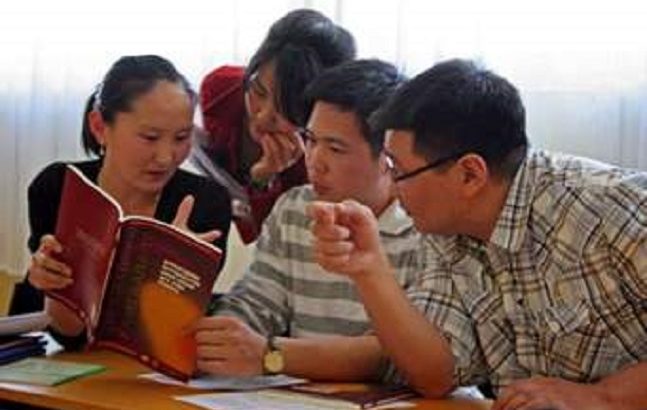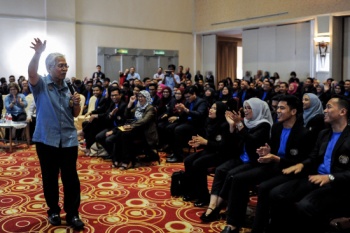Asia/Malasya, September 17, 2017, By: http://education.einnews.com /Christopher Lau
NOT long ago, a friend of mine was sharing her social work experience and one of her stories touched me deeply.
She spent a lot of time as a volunteer, teaching children in Bukit Lanjan, Selangor.
My impression has always been that only aboriginals living inland need help. Never would I have expected an aboriginal community in a bustling metropolis to be struggling to keep up.
According to my friend, the literacy gap between the aboriginal children in Bukit Lanjan and their other urban counterparts is still significant.
This made me wonder how serious are the problems faced by those aboriginal children living inland when even those living in metropolitan areas are facing schooling problems?
Putting aside geographical concerns, how are they doing in terms of attendance, classroom equipment, teaching quality and the like?
Conversing with my friend reminded me of the case in which seven aboriginal primary students from a boarding school in Kelantan went missing two years ago.
The incident had the public questioning and guessing the students’ whereabouts and it also attracted the attention of the outside world.
Looking at this incident, coupled with what my friend has described, I must ask the question – does it reflect the lack of pertinent education policies in our country or is it just because the existing policies are out of sync with the difficulties encountered by aboriginal students?
According to the 2010-11 Report of the Malaysian Human Rights Commission (MHRC) on the rights of aboriginal children, the main reasons for their low enrolment and high dropout rates are firstly, the schools are too far away, secondly, the lack of commutes, thirdly, poverty and lastly, the lack of necessary documents.
Policies were implemented under the 2013-2025 Malaysian Education Development Blueprint” to tackle the problems of remote school locations and transportation. The government launched a boarding school programme aimed at boosting the enrolment rates of aboriginal children.
To enhance the literacy rate of especially aboriginal adults, the MHRC Report proposed the launching of an Aboriginal Adult Education Programme (Program Kelas Dewasa Asli Peribumi). Children from poor families will also receive grants to reduce their parents’ burden.
To ensure their qualifications do not stagnate at primary school levels, the government opened seven boarding schools with syllabi from kindergarten to Form 3 (Special Model School K9).
At first glance, the goals and solutions spelt out by the Educational Blueprint appeared to be strategically appropriate but then, why are problems such as low literacy rates, truancy, and high dropouts still present?
Was it due to poor considerations or poor implementation?
As regards the disappearance of the seven aboriginal primary school children, their parents said they bathed in the river even though they were not allowed to do so, and out of the fear of punishment, they went into hiding and were later found dead.
The incident opened the Pandora box. Students from the same school started to report all kinds of issues such as malicious punishments, teachers not doing their duty properly and the lack of lesson time, among others.
What enraged the public was that relevant authorities just left the situation as it was.
Although the decision to build the boarding schools was commendable, proper implementation to ensure the set goals were achieved was just as important. Our education system assigns aboriginal children grades based on their age, starting from seven years old.
However, my friend said based on her experience, these aboriginal children are assigned grades not suitable to their level of literacy, resulting in slow learning or difficulties in keeping up with the teachers.
For example, an 11-year-old aboriginal child with a literacy level of Primary Two was still placed in a Primary Five Class.
The 2016 Education Blueprint Report showed the low literacy and poor mathematical skills among aboriginal children have not only lowered their schools’ performance but also increased the dropout rate.
Appropriate adjustments for grade-assigning based on relevant literacy levels must be incorporated into the education policy for aboriginal children.
At the recent Freedom Film Festival 2017, aboriginal children featured in the documentaries revealed the obstacles they encountered in school.
One of the most serious problems was bullying and exclusion. An aboriginal student said if society could put aside the existing discrimination and encourage the other students to help – not exclude – their aboriginal classmates, it would be the best help society can give the aboriginal community.
In addition, society should also stop discriminating against aborigines who do not have high academic qualifications but instead help them find jobs with a “hire locals” policy.
Undeniably, low household income of indigenous people is one of the reasons why aboriginal children drop out of school. Their parents just cannot afford their school fees.
Another problem is that the remote schools for aboriginal children are facing a shortage of teachers. Due to the lack of equipment, coupled with bad roads and inadequate transport, many teachers choose not to teach in these schools.
Needless to say, dedicated teachers are key to lifting the education standards of aboriginal children. They can also encourage aboriginal parents to participate in the children’s learning activities.
The provision of transport and communication facilities should be considered and included in school building plans.
In addition, the Education Ministry should also incorporate aboriginal skills into aboriginal school curricula to not only prevent the loss of these skills but also foster the children’s interests in learning.
Before drawing up an education programme for the aboriginal community, the relevant authority should take into account their views and concerns to achieve the best results.
Government officials should also visit aboriginal communities to get feedback on their requirements vis-à-vis the teaching methods, boarding schools and equipment.
Aboriginal people lack education allocations and as such, their children are deprived of a conducive learning environment to upgrade their academic standards.
The construction of boarding schools is also aimed at resolving geographical issues. At the age of seven, when a child still needs family care, aboriginal children are forced to leave home to attend boarding school. This poses a challenge any young primary school pupil will find near impossible to handle.
Our education goal is to achieve 100 per cent primary and secondary school enrolment rates by 2020 but the prospects appear remote if the voice of the aboriginal communities for better schooling facilities to raise enrolment rates continues to fall on deaf ears.
From: http://education.einnews.com/article/404308281/KF-ieYfsRbKZC9VT?lcf=ZdFIsVy5FNL1d6BCqG9muZ1ThG_8NrDelJyazu0BSuo%3D













 Users Today : 15
Users Today : 15 Total Users : 35460032
Total Users : 35460032 Views Today : 23
Views Today : 23 Total views : 3418654
Total views : 3418654